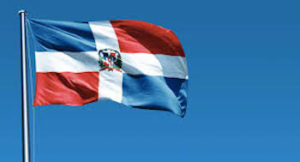
Dominican Republic Flag
*The Dominican Republic gained independence from Haiti on this date in 1844.
At the beginning of the 1800s, the colony of Santo Domingo, which had once been the headquarters of Spanish power in the New World, was in decline. During this time, Spain was embroiled in various wars to maintain control of the Americas. With Spain's resources spread among its global interests, Santo Domingo and other Caribbean territories became neglected. The population of the Spanish colony stood at approximately 80,000, with the vast majority being white-European descendants and free people of color.
For most of its history, Santo Domingo's economy was based on mining and cattle ranching. The Spanish colony's plantation economy never truly flourished; the Black slave population had been significantly lower than that of the neighboring Saint-Domingue, which was nearing a million slaves before the Haitian Revolution. After years of covert planning, a group known as La Trinitaria seized Puerta del Conde's fortress in Santo Domingo, and the Dominican War of Independence commenced toward freedom. Before the war, the island of Hispaniola had been united under the Haitian government for 22 years.
This was when the newly independent nation, previously known as the Captaincy General of Santo Domingo, was unified with Haiti in 1822. The criollo class within the country overthrew the Spanish crown in 1821 before unifying Haiti a year later. After ousting the Haitian occupying force from the country, Dominican nationalists had to fight against a series of attempted invasions from 1844 to 1856. Haitian soldiers would make incessant attacks to regain control of the territory, but these efforts were to no avail, as the Dominicans would go on to win every battle.